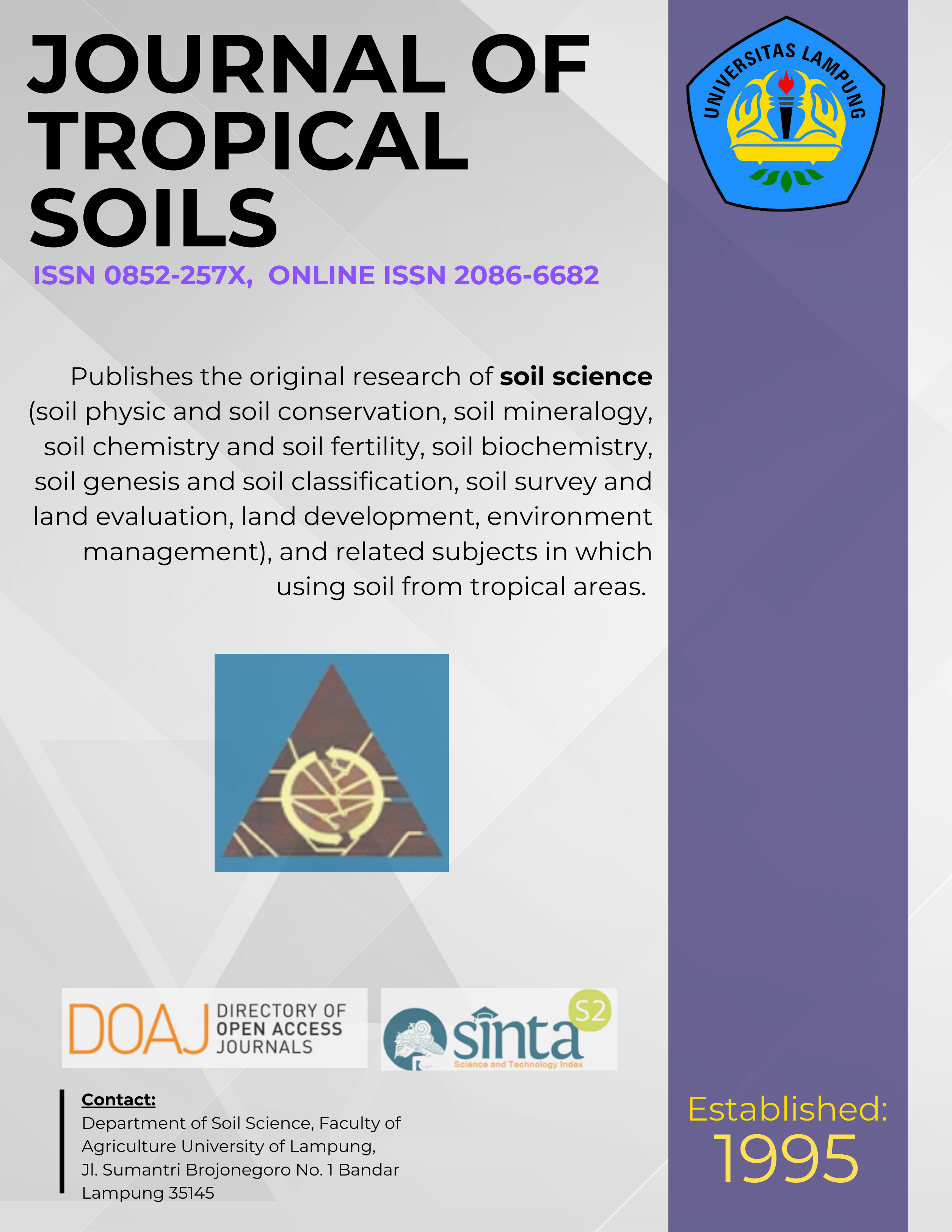Emissions of Methane and Nitrous Oxide from Rainfed Rice Field Treated with Different Rice Planting Systems and Nematicide Applications at Central Java, Indonesia
Main Article Content
Abstract
Rice field is issued as a source of greenhouses gases (GHGs) emissions especially methane (CH4) and nitrous oxide (N2O). Rice cultural approach could mitigate GHGs emissions i.e. through rice planting systems and nematicide application. The field experiment was conducted in rainfed rice field at Pati District, Central Java to determine effect of planting systems and nematicide application on emissions of methane and nitrous oxide from rainfed rice field. The six treatments were arranged in a randomized block design with three replicates, namely transplanted rice (TR) without applying nematicide, TR + neem cake, TR + carbofuran, direct seeded rice (DSR) without applying nematicide, DSR + neem cake, DSR + carbofuran. Parameters observed were methane flux, nitrous oxide flux, organic C content in rhizosphere, soil pH, soil redox potential surrounding rhizosphere of Ciherang variety. Methane emission under transplanted rice system was generally higher than direct seeded rice system. The treatment of DSR + neem cake resulted lowest methane emission (71 kg CH4 ha-1 season-1). The TR system emitted N2O lower significantly than the DSR system. Application of nematicide inhibitor materials decreased more effectively N2O emission. The DSR system increased significantly grain yield and N uptake, while application of nematicide materials didn’t increase grain yield but increased significantly N uptake.
[How to Cite: Anicetus W and ES Harsanti. 2015. Emissions of Methane and Nitrous Oxide from Rainfed Rice Field Treated with Different Rice Planting Systems and Nematicide Applications at Central Java, Indonesia. J Trop Soils 20: 127-134. Doi: 10.5400/jts.2015.20.3.127]
Downloads
Article Details
Section
License for Authors
Authors who publish with this journal agree to the following terms:
- Authors retain copyright and grant the journal right of first publication with the work simultaneously licensed under a Creative Commons Attribution License that allows others to share the work with an acknowledgement of the work's authorship and initial publication in this journal.
- Authors are able to enter into separate, additional contractual arrangements for the non-exclusive distribution of the journal's published version of the work (e.g., post it to an institutional repository or publish it in a book), with an acknowledgement of its initial publication in this journal.
- Authors are permitted and encouraged to post their work online (e.g., in institutional repositories or on their website) prior to and during the submission process, as it can lead to productive exchanges, as well as earlier and greater citation of published work (See The Effect of Open Access).
License for Regular Users
Other regular users who want to cite, distribute, remix, tweak, and build upon author’s works, even for commercial purposes, should acknowledge the work’s authorship and initial publication in this journal, licensed under a Creative Commons Attribution License.

